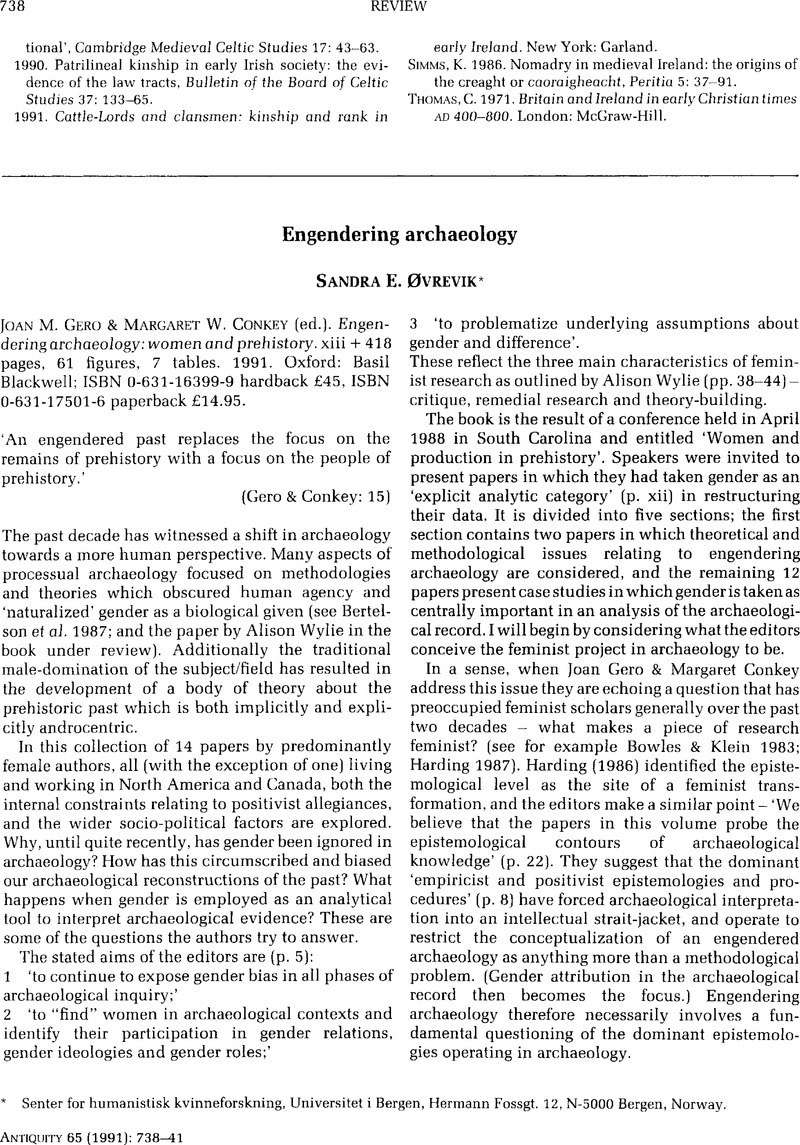Crossref Citations
This article has been cited by the following publications. This list is generated based on data provided by Crossref.
Knapp, A. Bernard
1998.
Who's come a long way, baby?.
Archaeological Dialogues,
Vol. 5,
Issue. 2,
p.
91.
Gutmann, Matthew C.
1998.
Do we need ‘masculinist’ (manly?) defenses of feminist archaeology?.
Archaeological Dialogues,
Vol. 5,
Issue. 2,
p.
112.
Bailey, Douglass W.
1998.
Flags, Guns, Snares and the Fish.
Archaeological Dialogues,
Vol. 5,
Issue. 2,
p.
107.
Knapp, A. Bernard
1998.
Masculinist archaeology?.
Archaeological Dialogues,
Vol. 5,
Issue. 2,
p.
115.
Treherne, Paul
1998.
Who's come a long way, dr. knapp?.
Archaeological Dialogues,
Vol. 5,
Issue. 2,
p.
115.



